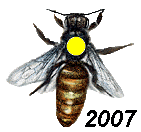1. A complete hive should give the apiarist such perfect control of all the combs, that they may be easily taken out without cutting them, or exciting the anger of the bees. 2. It should permit all necessary operations to be performed without hurting or killing a single bee. 3. It should afford suitable protection against extremes of heat and cold, sudden changes of temperature, and the injurious effects of dampness. The interior of the hive should be dry in winter, and free in summer from a pent and suffocating heat. 4. Not one unnecessary motion should be required of a single bee. As the honey-harvest in most locations, is of short continuance, all the arrangements of the hive should facilitate, to the utmost, tfu work of the busy gatherers. Hives which compel them to travel with their heavy burdens through densely crowded combs, are very objectionable. Bees instead of forcing their way through thick clusters, must easily pass into the lop surplus cases or supers of the hive, from any comb in the brood-chamber, and into every part, without traveling much over the combs. 5. It should be capable of being readily adjusted to the wants of either large or small colonies. 6. It should allow every good piece of worker-comb to be given to the bees, instead of melting it into wax, and should permit of the use of combfoundation. 7. It should prevent the over-production of drones, by permitting the removal of drone-comb from the hive. A hive containing too much comb suitable only for storing honey or raising drones, cannot be expected to prosper. 8. It should allow the bottom board to be loosened or fastened at will, for ventilation, or to clean out the dead bees in winter. If suffered to remain, they often become mouldy, and injure the health of the colony. In dragging them out, when the weather moderates, the bees often fall with them on the snow, and are so chilled that they never rise again; for a bee, in flying away with the dead, frequently retains its hold until both fall to the ground. 9. No part of the interior of the hive should be below the level of the place of exit. If this principle is violated, the bees must, at great disadvantage, drag, up hill, their dead, and all the refuse of the hive. 10. It should afford facilities for feeding bees, both in warm and cool weather, in case of need. 11. It should furnish facilities for enlarging, contracting, and closing the entrance, to protect the bees against robbers. 12. It should furnish facilities for admitting at once a large body of air, that the bees may be tempted to fly out and discharge their feces, on warm days in winter, or early spring. If such a free admission of air cannot be given, the bees, by losing a favorable opportunity of emptying themselves, may suffer from diseases resulting from too long confinement. 13. It should allow the bees, together with the heat and odor of the main hive, to pass in the freest manner, to the surplus honey receptacles. 14. Each of the parts of every hive in an apiary should be so made, as to be interchangeable from one hive to another. In this way the apiarist can readily make the exchanges of brood, honey or pollen, which circumstances demand. 15. The hive should permit the surplus honey to be 'taken away in the most convenient, beautiful and salable forms. 16. It should be equally well adapted to be used as a swarmer, or nonswarmer. 17. It should enable the apiarist to multiply his colonies with a certainty and rapidity which are impossible if he depends on natural swarming. 18. It should enable the apiarist to supply destitute colonies with the means of obtaining a new queen. 19. It should enable him to catch the queen, for any purpose; especially to remove an old one whose fecundity is impaired by age. 20. It should enable a single beekeeper to superintend several hundred colonies for different individuals. 21. All the joints of the hive should be water-tight, and there should be no doors or shutters or drawers liable 'to shrink, swell or get out of order. 22. A complete hive should be protected against the destructive ravages of mice in winter. 23. It should permit the honey, after the gathering season is over, to be concentrated where the bees will most need it. 24. It should permit the space for spare honey receptacles to be enlarged or contracted at will, without any alteration or destruction of existing parts of the hive. 25. Its surplus honey receptacle should be as close to the brood as possible. 26. A complete hive, while possessing all these requisites, should, if possible, combine them in a cheap and simple form, adapted to the wants of all who are competent to cultivate bees. L. L. Langstroth
Welcome!
There are multiple hives and plans with the same basic name here. Use the search bar at the top left of this page if you do not see exactly what you want and came here by a search engine. Use the "Older Posts" hyperlink at bottom for more hives. For a larger photo, click on the photo. Got Small Hive Beetles? Use the traps in our Build It Yourself section and get the upper hand.




